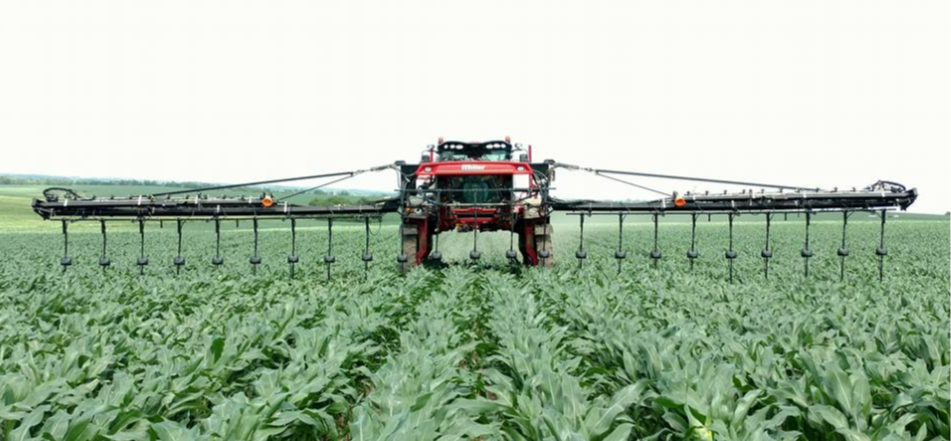
Nitrogen is usually what comes to mind when we talk about sidedressing corn, but I’d like to share with you an on farm situation where nitrogen was not a yield limiting factor, but phosphorus and boron were. I received a call from a farmer in mid to late May of last year. He was expressing his concerns about the way one of his corn fields was looking like; not very vigorous growth, small plants with red and purple colored leaves, symptoms of phosphorus deficiency.
When I went to that field to check out his corn, his description was “spot-on” for phosphorus deficient corn plants. My next step was to pull a tissue and soil sample to verify the visual symptoms of phosphorus deficiency and also to check and see if there were any other yield limiting factors in this field. The tissue test results came back showing boron was deficient and phosphorus was low to deficient, the other nutrient levels were fine. The soil sample result showed boron being low and the P1 phosphorus test was medium at 19 ppm…I was expecting a much lower phosphorus reading by the way the corn looked. Calcium was low and the soil pH was extremely low, the other seven nutrients on the soil sample were in good shape. An extremely low soil pH has a negative impact on phosphorus availability, which helps to explain why this field was showing phosphorus deficiencies, even though the phosphorus level on the soil sample was not low.
With the information gathered from the soil and tissue tests, the farmer and I decided to look at a 200 bushel yield uptake of phosphorus and boron and apply 75% of those needs. This decision was made the fourth week of June and the phosphorus and boron were applied as liquid through WS Ag Center’s Miller sprayer, equipped with Y-Drops.
The next question is: Was it worth it? … Yes it was!
We left an untreated check to compare yields, the untreated area yielded 190.7, the treated area ended up at 229.3. These yield checks were right next to each other. The cost of the treatment, including application was $75.00 per acre. When you spread that cost over the extra 38.6 bushels per acre, you realized a cost of $1.94 per bushel on those extra bushels.
In summary, nitrogen is the most widely used nutrient when
sidedressing corn, and always will be. My main goal of the article was to point out the fact that there can be other yield limiting nutrients in certain situations. There is time to properly diagnose and treat those yield robbing situations should they occur. Did I expect a 38 plus bushel response from this situation? NO… but knowing that a corn plant takes up over 50% of its phosphorus after tasseling, the odds were in our favor for a decent yield response.
-Dan Langkamp